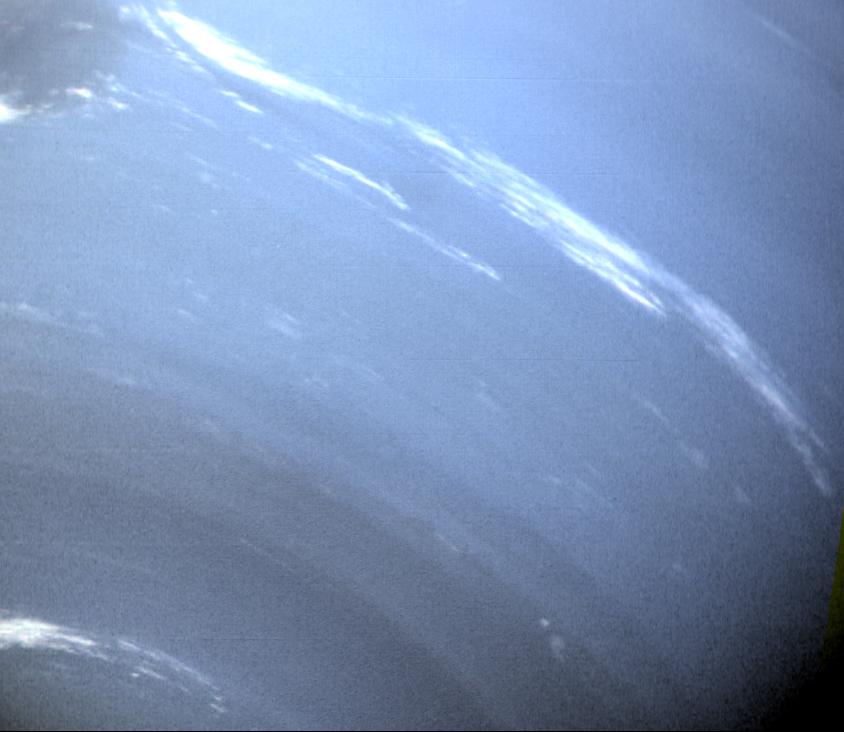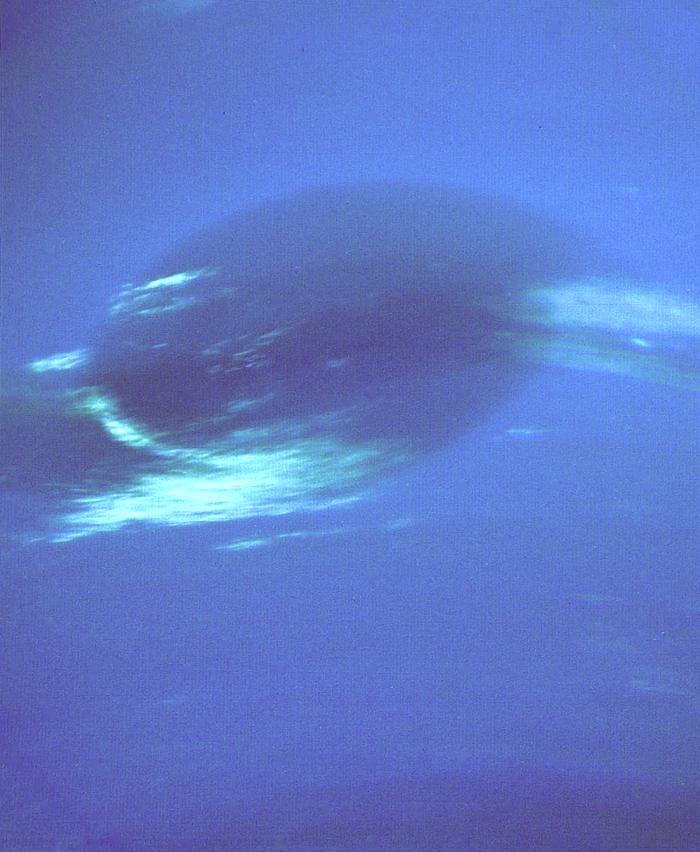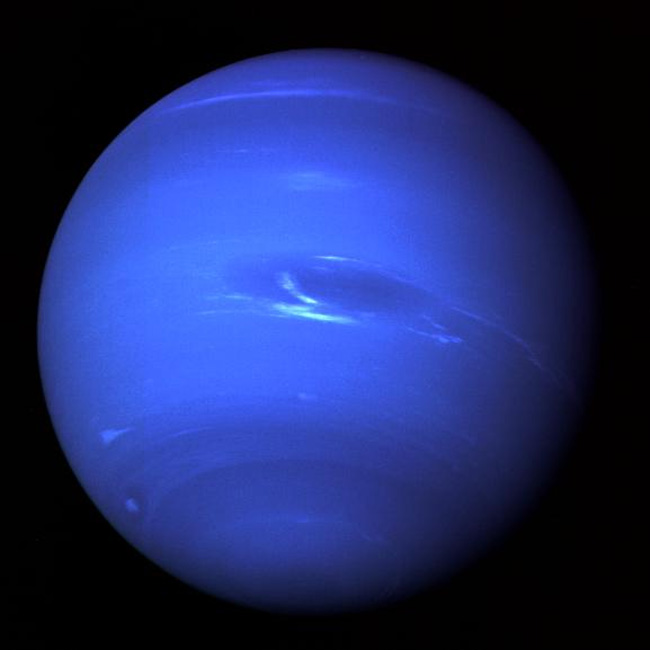Photos of Neptune, The Mysterious Blue Planet
New Pictures of Neptune's Moon Triton
This view of the volcanic plains of Neptune's moon Triton was made from topographic mapping of images obtained by NASA's Voyager 2 spacecraft during its August 1989 flyby.
White Clouds of Neptune
This image of Neptune was taken by Voyager 2's wide-angle camera when the spacecraft was 590,000 km (370,000 miles) from the planet. The image has been processed to obtain true color balance. Additional processing was used to suppress surface brightness of the white clouds. The processing allows both the clouds' structure in the dark regions near the pole and the bright clouds east of the Great Dark Spot to be reproduced in this color photograph. Small trails of similar clouds trending east to west and large scale structure east of the Great Dark Spot all suggest that waves are present in the atmosphere and play a large role in the type of clouds that are visible.
Great Spot on Neptune
This photograph shows the last face on view of the Great Dark Spot that Voyager will make with the narrow angle camera. The image was shuttered 45 hours before closest approach at a distance of 2.8 million kilometers (1.7 million miles). The smallest structures that can be seen are of an order of 50 kilometers (31 miles)
Dark Spot on Neptune
NASA's Hubble Space Telescope discovered a new great dark spot, located in the northern hemisphere of the planet Neptune. Because the planet's northern hemisphere is now tilted away from Earth, the new feature appears near the limb of the planet. The spot is a near mirror-image to a similar southern hemisphere dark spot that was discovered in 1989 by the Voyager 2 probe. In 1994, Hubble showed that the southern dark spot had disappeared.
Neptune's Tall Clouds
This Voyager 2 high resolution color image, taken 2 hours before closest approach, provides obvious evidence of vertical relief in Neptune's bright cloud streaks. These clouds were observed at a latitude of 29 degrees north near Neptune's east terminator. The linear cloud forms are stretched approximately along lines of constant latitude and the sun is toward the lower left. The bright sides of the clouds which face the sun are brighter than the surrounding cloud deck because they are more directly exposed to the sun. Shadows can be seen on the side opposite the sun
14 Big Space Rocks Discovered Beyond Neptune
An artist's concept of a craggy piece of Solar System debris that belongs to a class of bodies called trans-Neptunian objects. Astronomers culling the data archives of NASA's Hubble Space Telescope have added 14 new TNOs to the catalog.
The winds of Neptune
Neptune’s winds travel at more than 1,500 mph, and are the fastest planetary winds in the solar system.
Breaking space news, the latest updates on rocket launches, skywatching events and more!

Space.com is the premier source of space exploration, innovation and astronomy news, chronicling (and celebrating) humanity's ongoing expansion across the final frontier. Originally founded in 1999, Space.com is, and always has been, the passion of writers and editors who are space fans and also trained journalists. Our current news team consists of Editor-in-Chief Tariq Malik; Editor Hanneke Weitering, Senior Space Writer Mike Wall; Senior Writer Meghan Bartels; Senior Writer Chelsea Gohd, Senior Writer Tereza Pultarova and Staff Writer Alexander Cox, focusing on e-commerce. Senior Producer Steve Spaleta oversees our space videos, with Diana Whitcroft as our Social Media Editor.







